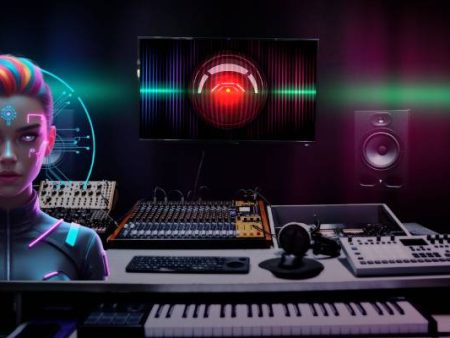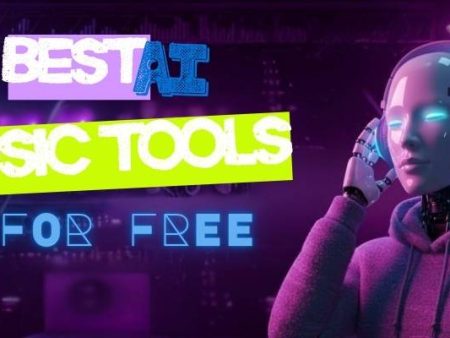There’s a strange joy in hearing a song come together—whether you’re sitting at a piano, strumming a guitar, or, nowadays, clicking a few buttons on your laptop.
The idea that you can make music in minutes, without years of training, used to sound like a marketing gimmick. But in 2025, it’s real.
The rise of AI music generation has changed not just the way professionals produce songs, but how everyday people approach creativity.
You don’t need to be Mozart. You don’t even need to know music theory. What you need is curiosity, a device, and the right tools.
Still, the question lingers: is music made this way any good? Does it feel authentic, or is it just machine-polished noise?
That’s what we’ll dig into here—a guide that’s practical, but also personal. I’ll walk you through the steps of how to create a song with AI in minutes, share insights from my own experiments, and reflect on what all this means for artistry.
Why AI in Music Feels Both Exciting and Unsettling
Before we dive into the actual steps, it’s worth pausing. Because if you’re like me, you may feel torn.
On one hand, AI promises to make music-making accessible to anyone. That’s democratizing. That’s powerful.
On the other, there’s an unease—can something crafted by an algorithm carry the same emotional weight as a ballad written after heartbreak?
It’s not just an artistic question—it’s economic, too. The global AI in music market was valued at over $229 million in 2022 and is projected to grow at 28.6% CAGR from 2023 to 2030, according to Grand View Research. That means the shift isn’t slowing down.
So whether you’re skeptical or eager, learning how to use these tools is no longer optional. It’s part of the landscape now.
Step 1: Choose the Right AI Tool
The first thing you need to do is pick your weapon—or maybe “partner” is a better word. There are dozens of ai music apps that promise you can create full tracks instantly. Some are focused on casual users, others on professional production.
Here are a few categories to consider:
- Casual & Fun: Boomy, Ecrett, or Soundraw (great for beginners).
- Professional Composition: Aiva, Amper Music (used in film, games, and ads).
- Open-Source Exploration: Magenta Studio from Google (more experimental).
My advice? Start simple. Don’t overwhelm yourself with advanced platforms right away. Test one or two and see which feels intuitive.
Step 2: Define Your Song’s Purpose
This might sound obvious, but ask yourself: what’s the song for?
- Background music for a video? → You need something instrumental and royalty-free.
- A personal track for fun? → Play around with melodies and vocals.
- Trying to release on Spotify? → Aim for higher-quality, polished outputs.
This matters because each platform has strengths. If you’re working on cinematic soundscapes, Aiva shines. If you want a pop-style beat, Boomy or Soundraw can get you there fast.
Step 3: Start with Lyrics (Optional, but Powerful)
Here’s where things get personal. Lyrics are the soul of a song. They tell your story, even if the chords and melodies echo thousands before.
Some AI platforms now help with turning lyrics into songs, setting your words to melodies automatically. You can input lines like:
“I’m still awake when the city sleeps,
chasing the ghost of a dream too deep.”
And watch as the system generates a tune to carry them. It’s surreal—and sometimes clumsy—but it’s a start.
If you’re not into writing, that’s fine. You can skip lyrics entirely and focus on instrumentals. But if you want the song to carry more of you, don’t skip this step.
Step 4: Pick a Style and Mood
Most AI music apps that matter let you choose genres and moods. Think of it as telling the machine: “I want a jazz ballad” or “Give me something like EDM but slower.”
This is where AI’s vast dataset becomes your playground. It has studied thousands of songs across decades and genres.
When you say “sad piano ballad,” it knows the chord patterns, tempos, and instrumentation likely to fit.
Don’t be afraid to mix moods. Try “energetic but melancholic.” You might be surprised at the combinations AI suggests.
Step 5: Generate and Listen Without Judgment
Here’s the fun (and humbling) part. Hit “generate.” Within seconds, you’ll have something that resembles a song.
Now, resist the urge to judge it too harshly. AI outputs are hit or miss. Sometimes you’ll get a gem, other times something that sounds like an awkward stock track. But every attempt teaches you something about what to tweak.
This step reminds me of brainstorming with a human collaborator. Not every idea sticks, but sometimes one suggestion sparks the breakthrough you needed.
Step 6: Edit and Customize
This is where ai in the studio: becomes real. Don’t settle for the first draft. Change the tempo, swap instruments, or adjust the key. If the melody feels flat, regenerate it or add your own spin.
The best songs often come when you blend machine suggestions with human imperfections. Add a guitar riff you recorded.
Layer your own vocals over the generated beat. Insert pauses, stumbles, or breaths that make it feel alive.
AI might hand you a skeleton, but you decide how to dress it.
Step 7: Polish the Track
Professional platforms often include mastering features. Tools like LANDR or iZotope can automatically balance levels, EQ, and compression.
It’s not a substitute for a real mastering engineer, but it gets you 80% of the way there.
If you’re serious about releasing the track, this step matters. A rough mix can be fun for personal use, but polished sound is essential for public distribution.
Step 8: Export and Share
Once you’re happy, export the track. Many platforms offer direct integration with Spotify, YouTube, or TikTok. Boomy, for instance, lets you publish instantly.
And this is where the journey comes full circle. What started as curiosity becomes something you can share with the world—proof that a song doesn’t have to take months or years anymore.
Top Free AI Music Platforms for Quick Song Creation
If you’re just starting, here are some top free ai music tools you should try:
- Boomy: Fast, fun, and lets you publish to streaming platforms.
- Soundraw: Customizable loops with a free trial.
- Magenta Studio: Open-source plugins for deeper experimentation.
- Aiva (free tier): Great for orchestral and classical vibes.
- Ecrett Music: Accessible and simple for background tracks.
Each has its quirks, but they’re excellent gateways into the world of AI songwriting.
Challenges and Limitations You Should Know
Before you get too carried away, let’s acknowledge the flaws.
- Emotional depth: AI can mimic sadness or joy, but it doesn’t feel them. That lack sometimes shows.
- Homogenization: Many AI songs start to sound similar, especially in mainstream genres.
- Ethical issues: Who owns AI-generated music? The creator, the platform, or no one? Legal frameworks are still evolving.
- Cultural authenticity: AI may struggle with niche genres tied to cultural traditions it wasn’t trained on.
These aren’t deal-breakers, but they’re worth keeping in mind.
Personal Reflection: My First AI Song
When I made my first AI song, I expected to roll my eyes. But instead, I found myself humming the chorus hours later.
It wasn’t groundbreaking, but it was catchy, and more importantly—it felt like mine.
That moment made me realize AI isn’t about replacing human emotion. It’s about lowering barriers.
It gives people who might never step into a studio the chance to express themselves musically. That’s something worth celebrating, even if it’s imperfect.
The Bigger Picture: What This Means for Music
Here’s the truth: the future of music will be hybrid. Humans bring stories, imperfections, lived experiences.
Machines bring speed, pattern recognition, and access. Together, they create new possibilities.
Will AI co-write chart-topping hits? Almost certainly—it already has. But will it replace the depth of human storytelling in music?
I don’t believe so. Instead, it will challenge us to redefine what it means to be creative in an age where anyone can make a song in minutes.
Conclusion: The Human Layer Still Matters
So yes—you can make a song with AI in minutes. And yes, it might even be good. But the reason it matters isn’t the machine. It’s you. Your choices, your edits, your stories layered over the generated skeleton.
If you treat AI as a collaborator rather than a crutch, it won’t diminish your creativity. It will expand it.
And maybe, just maybe, it will help more people discover the joy of making music—people who never thought they could.
That, to me, feels worth the unease.


